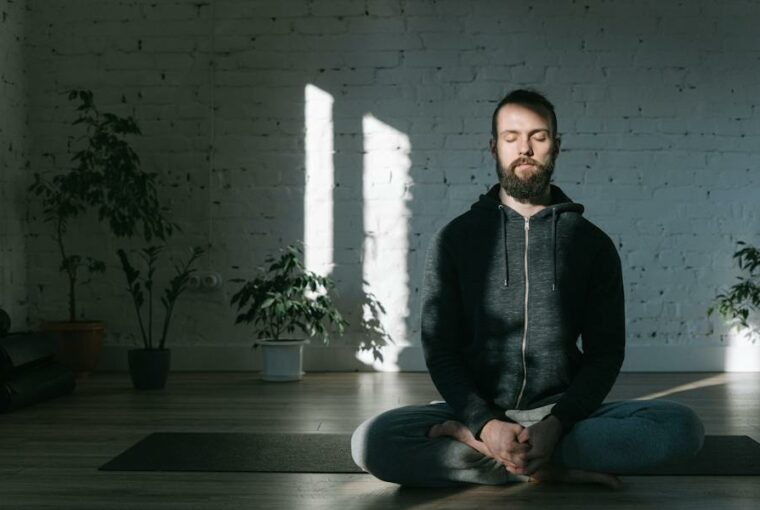The shape of our noses has long been a source of fascination and even insecurity for many individuals. In recent years, the internet has been flooded with promises of non-surgical nose reshaping through various nose exercise routines. These exercises claim to offer dramatic changes to the nose’s appearance without the need for invasive procedures. But do nose exercises work, or are they simply another myth in beauty and self-improvement? In this article, we will delve into the science behind nose exercises, debunk common myths, seek expert opinions, and provide a well-rounded understanding of whether nose exercises can genuinely transform your nose as promised.
Does Nose Exercises Work?
Nose exercises, often touted as a way to reshape or refine the nose without surgery, have gained popularity in recent years. However, it’s important to approach these exercises with realistic expectations. While some individuals may experience minor improvements in the appearance of their noses through consistent, gentle exercises, these changes are generally subtle and temporary. Nose shape is primarily determined by genetics and the underlying bone and cartilage structure, which cannot be significantly altered through exercise alone. For individuals seeking more significant changes to their noses, consulting with a qualified medical professional may be a more practical option.
The Science Behind Nose Exercises
The science behind nose exercises is a topic of interest, but it’s essential to approach it with a clear understanding of the limitations and current knowledge in this area. Here’s a brief overview:
The nose is primarily made up of bone, cartilage, and soft tissues. Unlike muscles in the body, the nose doesn’t contain significant muscle tissue that can be exercised to change its shape. Most exercises for the nose focus on the surrounding facial muscles, which may have minimal impact on the nose’s appearance.
The key factors that determine the shape and size of the nose are the underlying bone and cartilage structures. These structures are generally stable and don’t significantly change in response to exercise. While some minor adjustments might occur over time due to aging and growth, they are typically not the result of exercise routines.
If nose exercises have any impact, they are likely to be subtle and gradual. Any changes observed are more likely due to improved blood circulation, skin health, or muscle tone in the surrounding areas rather than a direct alteration of the nose’s shape or size.
There needs to be robust scientific research supporting the effectiveness of nose exercises in reshaping the nose. Most claims are anecdotal, and individual experiences can vary widely.
When considering nose exercises or any cosmetic alteration, it’s crucial to consult with qualified dermatologists or plastic surgeons. They can provide professional guidance and discuss more effective options for achieving desired changes, such as surgical or non-surgical procedures.
Some nose exercises may focus on improving nasal breathing and airway function. While this may not directly alter the external appearance of the nose, it can have positive health implications, such as better sleep quality and overall well-being.
It’s essential to recognize that the perception of one’s nose can be highly subjective. Engaging in nose exercises might have a psychological benefit, as individuals feel more in control of their appearance and self-esteem. However, this psychological benefit should be distinct from significant physical changes.
Nose exercises should be performed cautiously, using gentle techniques to avoid causing any harm or discomfort. Excessive pressure or force to the nose can lead to injury or irritation.
Some individuals combine nose exercises with other methods, such as makeup techniques or hairstyles, to create the illusion of a different nose shape. These approaches can be practical for temporary cosmetic changes.
What Are Expert Opinions?
Expert opinions are crucial in providing informed insights, guidance, and assessments on various topics, drawing from their extensive knowledge, experience, and expertise in specific fields. These opinions are precious for individuals seeking reliable information, particularly in areas where complex or specialized knowledge is required.
Medical Insights:
Medical professionals, such as dermatologists and plastic surgeons, can provide expert opinions on the anatomical structure of the nose, the factors that contribute to its appearance, and the limitations of non-surgical methods like nose exercises. They can clarify whether and to what extent exercises may affect the nose’s appearance or functionality.
Safety Recommendations:
Experts can advise on the safe and appropriate practices for nose exercises, helping individuals avoid potential risks or harm. They can guide gentle techniques and precautions while attempting nose exercises.
Alternative Solutions:
Experts are well-versed in various cosmetic and medical procedures for altering the nose’s appearance. They can suggest alternative options, such as rhinoplasty (nose surgery) or non-surgical dermal fillers, with a more established track record in achieving specific changes.
Realistic Expectations:
Experts can help individuals set realistic expectations regarding the outcomes of nose exercises. They can explain that any changes resulting from these exercises are likely to be subtle and temporary and may not meet the desired aesthetic goals for everyone.
Individual Assessment:
A crucial aspect of expert opinions is their ability to provide personalized assessments. They can evaluate an individual’s unique facial anatomy, skin condition, and overall health to determine whether nose exercises or other procedures would be suitable and adequate for achieving the desired changes.
Ethical Considerations:
Experts can also address ethical considerations related to body image and self-esteem, helping individuals develop a healthier and more positive attitude toward their appearance.
The Benefits Of Nose Exercises?
While the effectiveness of nose exercises in significantly altering the shape or size of the nose is debated and may be limited, there are some potential benefits associated with incorporating nose exercises into your routine:
- Improved Nasal Breathing: Certain nose exercises, such as deep breathing and nostril dilation techniques, can enhance nasal airflow and breathing. This can be particularly beneficial for individuals with nasal congestion, allergies, or respiratory issues, as improved nasal breathing can lead to better overall health and sleep quality.
- Facial Muscle Toning: Some nose exercises involve facial muscle movements and massages around the nose area. These exercises may contribute to improved muscle tone, potentially leading to a more youthful and refreshed appearance of the face. However, any changes are typically subtle and may take time to become noticeable.
- Stress Reduction: Engaging in nose exercises, especially those focused on relaxation and deep breathing, can help reduce stress and anxiety. This can have a positive impact on overall well-being and mental health.
- Enhanced Mind-Body Connection: Nose exercises that involve mindfulness and concentration can help individuals develop a stronger mind-body connection. This heightened awareness of facial muscles and breathing patterns may promote relaxation and mindfulness in daily life.
- Non-Invasive Approach: Nose exercises are a non-invasive, natural method for individuals hesitant about surgical or more aggressive cosmetic procedures. They carry minimal risks and can be a safe way to explore minor aesthetic changes without going under the knife.
- Improved Self-Confidence: Engaging in a regular self-care routine, such as nose exercises, can boost self-esteem and self-confidence. Feeling proactive about one’s appearance can have a positive psychological impact, even if the physical changes are subtle.
- Personal Experimentation: For some individuals, trying nose exercises can be a personal experiment to see if they notice any changes in the appearance of their nose. This can be a source of curiosity and self-discovery.
Alternatives To Nose Exercises
Rhinoplasty (Nose Surgery): Rhinoplasty is a surgical procedure that offers a permanent and precise solution for reshaping the nose. A board-certified plastic surgeon typically performs it and can address many concerns, including changes to the nose’s size, shape, and structure. Rhinoplasty can provide comprehensive results, improve aesthetics and function, and correct congenital deformities, breathing problems, or injuries.
Non-Surgical Rhinoplasty: Non-surgical rhinoplasty involves the use of injectable dermal fillers, like hyaluronic acid, to reshape and enhance the appearance of the nose. While it’s less invasive and has a shorter recovery time than surgical rhinoplasty, the results are temporary and may need touch-up treatments every 6-12 months.
Nasal Strips And Dilators: Over-the-counter nasal strips and dilators are designed to improve nasal airflow by physically opening the nostrils. They can be a helpful option for individuals experiencing nasal congestion, snoring, or breathing difficulties, especially during sleep.
Makeup Techniques: Makeup can create the illusion of a different nose shape. Contouring and highlighting with makeup can be effective in visually refining the appearance of the nose. Makeup artists often employ these techniques to balance facial proportions and enhance features.
Hairstyling: Hairstyles can also be used strategically to divert attention from the nose. Choosing the right hairstyle, bangs, or accessories can help create a harmonious balance in facial proportions.
Embracing Self-Acceptance: Sometimes, the most empowering alternative is to embrace self-acceptance and body positivity. Appreciating your unique features and practicing self-love can improve self-esteem and confidence.
Consulting With Professionals: For individuals with specific concerns about the appearance of their noses, consulting with qualified dermatologists or plastic surgeons is essential. These medical professionals can evaluate thoroughly, provide expert opinions, and recommend personalized solutions based on your unique facial anatomy and aesthetic goals.
Allergy Management: Nasal congestion and inflammation can affect the nose’s appearance. Seeking guidance from allergists or otolaryngologists (ear, nose, and throat specialists) can help identify and address allergies or sinus issues, leading to improved nasal health and reduced swelling.
Bottom Line
While nose exercises may offer minor benefits such as improved nasal breathing, enhanced muscle tone, and reduced stress, they are unlikely to produce significant or permanent changes in the size or shape of your nose. Nose shape is primarily determined by genetics, bone structure, and cartilage, which cannot be significantly altered through exercises alone. Suppose you are seeking more substantial changes to the appearance of your nose. In that case, it’s advisable to explore alternatives like rhinoplasty (nose surgery), non-surgical rhinoplasty (using dermal fillers), or consulting with qualified medical professionals for personalized guidance. These options have a more established track record for achieving specific aesthetic goals and can provide more predictable and lasting results.




